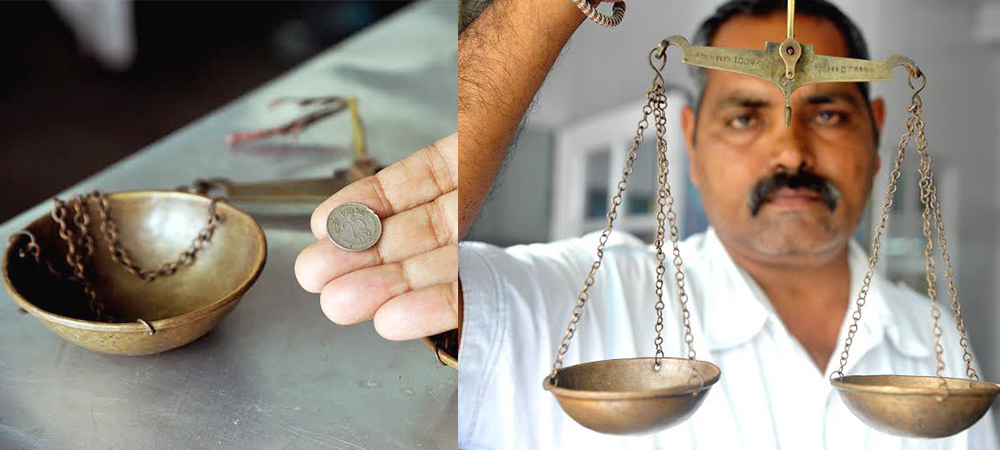On a recent trip to some tea gardens in Darjeeling, I learnt something new – to those guys managing the plantations, an Indian 25-paisa coin is more than a quarter. It is a measuring weight.
Akin to perhaps what a 25-cent coin would mean in the US, these coins are used as weights to measure small quantities of teas that have been earmarked for tasting.
One garden even had a Pakistani quarter for the purpose. Honestly, I could not make out heads or tails of it at first.
Coins are used as weights, not in some village shop but a modern plantation… seriously? I was so incredulous when I heard this I am sure my mouth was hanging open. I mean, what about actual weights issued by the Controller of Weights and Measures, who sits in Delhi and lords over all weight-related balancing acts?
Ah, you see Mr Basu, I was educated with a beatific smile, a 25-paisa coin weighs 2.5 gm, which is the exact amount of tea required for sampling and arriving at an appropriate sale price. The Pakistani bit – which I found at Namring tea estate – also fit the bill.
And the coins are literally “heavyweights”; these are not the new light lot issued by the Indian Mint, and are dated years ago.
The one at Goomtee, for instance, was issued four decades ago in 1974, while the Pakistani quarter at Namring is of uncertain antiquity.
I was assured repeatedly that the system works.
BIT MEASURES
To give the practice a wider perspective, consider this: the coins are critical to assessing samples of the entire production at a garden.
In other words, the 1974 Indian coin at Goomtee plays a huge role in the process that fixes a value on the 90,000 kg of tea that the garden manufactures annually.
In Namring, which produces some 300,000 kg annually, the Pakistani coin plays that same role. As it did this March, and led a UK importer to judge one single lot of 90 kg from Namring as being the best among all 87 gardens in Darjeeling in the first flush.
The lot was subsequently sold in the UK fetching the importer a cool Rs 4.4 million (about $66,500).
When I arrived at Goomtee, I buttonholed its General Manager B.N. Mudgal to demystify the odd practice when highly calibrated instruments are already available. A veteran with 40 years in the business, I reckoned if anybody could shed light, it had to be him.
In the event, I drew a blank. “I have no idea who started it,” Mudgal told me frankly. The practice had begun under British managers prior to 1947, he said, and been “institutionalised” by the time he joined the profession in the mid-’70s.
Mudgal theorised sampling had been perfected “after a lot of experiment”, with tasters realising that tea not weighing more than a 25-paise coin was the ideal sampling amount.
And the planters of today have stuck on with the practice…and the old coins. As Mudgal said, the new set is too “lightweight”.
Plus, nobody really “wanted to mess with tradition… coins work fine.”
I saw the practice repeated at other gardens such as Mim and Namring, though at Avongrove, they preferred the modern standardised weights.
I could understand that with Avongrove; the garden had been closed for 28 years, and the old coins could have been misplaced. Plus, the garden was making a new beginning under a new management.
PAKISTANI QUARTER
But Mudgal’s theory about the origin of the practice made sense; it was unlikely that the then British authorities would issue an awkward standard weight of 2.5 gm – even for English planters.
So when the 25-paisa coin was found to fit the bill, the planters latched on to it. But the question was, how did the Pakistani quarter land at Namring?
I met Namring owner Prateek Poddar in Kolkata to get a heads-up. He would know, I thought, it was his family’s garden after all.
Once again, I hit a wall. Poddar merely said his grandfather probably acquired the coin when he bought the garden from the British in 1973.
Neither could Harkaram Chaudhary – a Namring old-hand who has risen from the ranks to the garden manager’s post – explain it. “It was always there,” he told me. “I never really thought about it.”
In all probability, like many antiques at Namring, the coin too was a legacy of the British, left behind by an Englishman arriving from Pakistan.
I inspected it. It was either copper or nickel, and sellotaped to the bottom of one pan of a dented balance scale – also of copper and also a British hand-me-down.
The coin’s faces were so effaced from decades of handling that I could not determine the year of issue. In fact, I was not even sure if there was a year mentioned in the first place.
But it had to be post-1947, I concluded; the word “Pakistan” was legible, and the embossed image of the crescent and star quite clear. Below it, slightly erased, the words “quarter rupee”.
As I said earlier, Namring uses no Indian coin, the Pakistani quarter being considered good enough. As Chaudhary observed wryly, “It serves its purpose.”
Featured photograph is of the Goomtee tea estate manager Diwakant Mishra weighing tea, with an Indian 25-paisa coin as a measuring weight at the garden’s sampling room. Photograph by Uday Bhattacharya.

